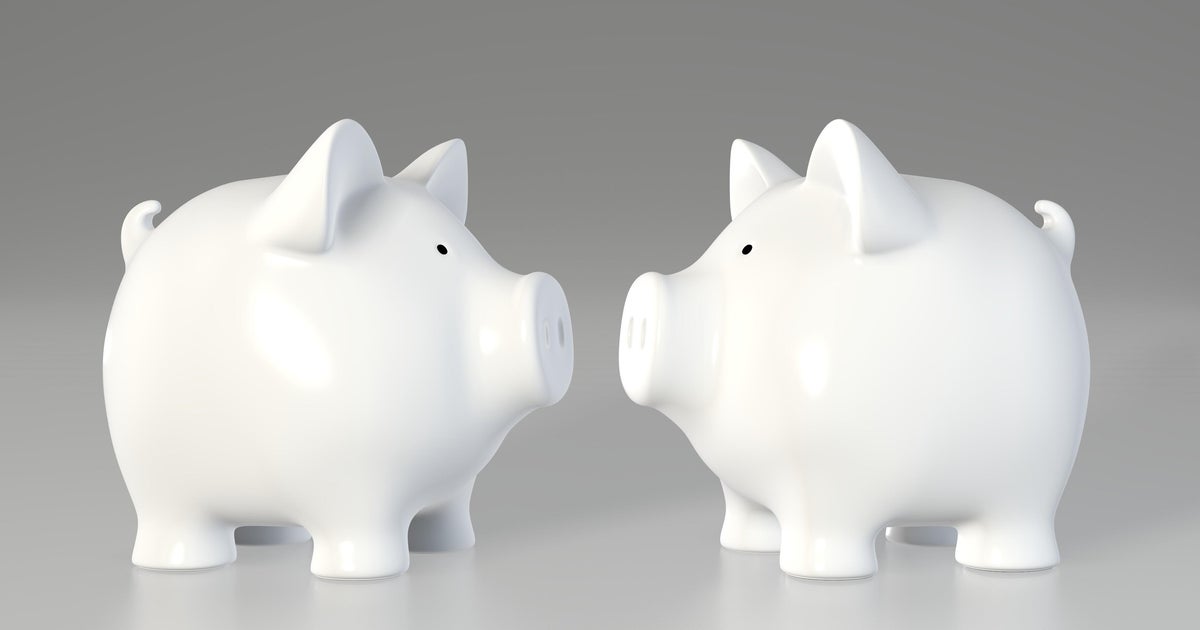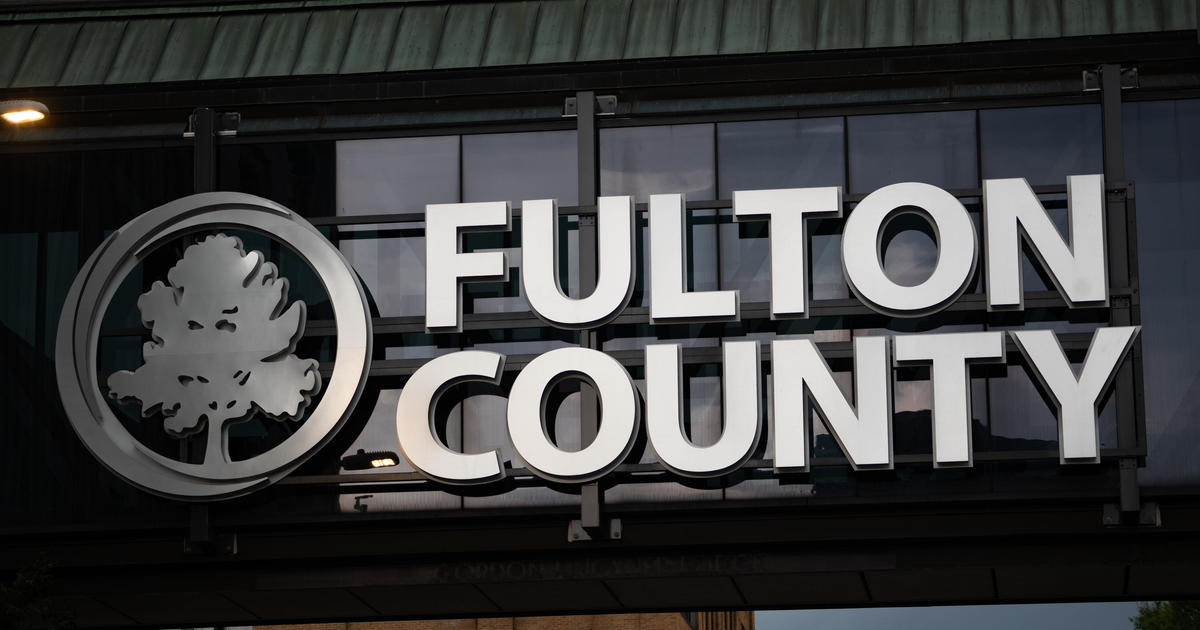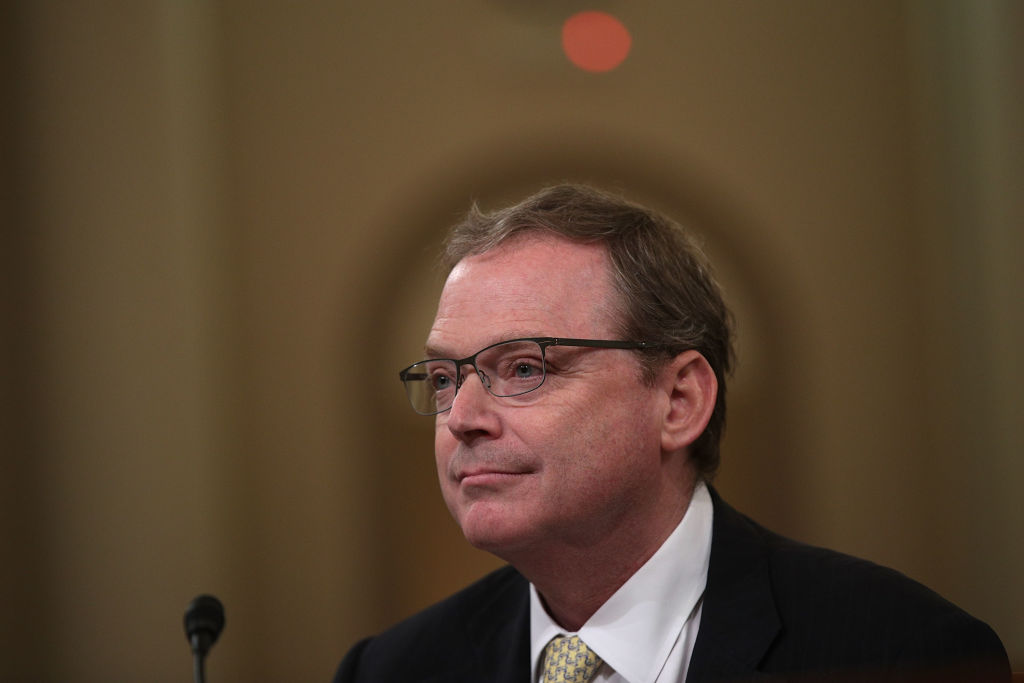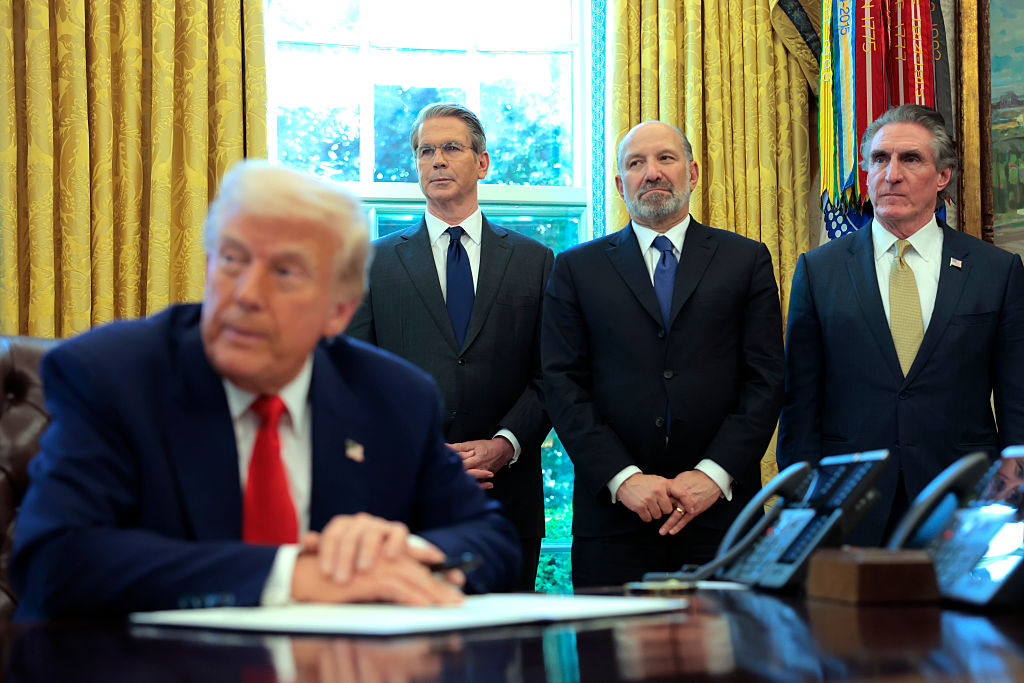Recession fears are back — should you be worried?
- Financial markets are flashing warning signs as global economic growth falters and the U.S.-China trade war continues to fester.
- Yet despite the ominous signals, most forecasters don't think a recession is imminent.
- Measures like low U.S. unemployment and robust retail sales suggest the longest economic in U.S. history has room to run.
A turbulent week in stocks reflects concerns that the longest economic expansion in U.S. history is quickly running out of steam, with headlines blaring about the rising threat of recession. So what has investors spooked, and should Americans be nervous?
Nasty curveball
U.S. stocks tanked on Wednesday as a key signal from the bond markets -- the yield curve -- went haywire for the first time since before the Great Recession. The yield curve shows the spread in investment returns on different U.S. government bonds, from 1-month Treasury bills to 30-year bonds. Normally, longer-term bonds offer a higher rate of return, or yield, than shorter-maturity debt to compensate investors for the risk of tying up their money.
The yield curve is said to "invert" when returns on long-term debt falls below that on short-term Treasuries. Basically, it's an alarm bell. What's causing investors to fret is that an inverted yield curve has preceded every recession since World War II. That has some financial pros, such as David Rubenstein of private equity firm The Carlyle Group, worried.
"So we're due for a recession, and I think there are some signs that were are gonna head into one – but you can't know for certain until you're actually in it," he told CBS This Morning.
Recessions typically occur every seven years or so. Still, that doesn't mean a prolonged downturn is around the corner, or likely to resemble the epic collapse that followed the housing bust. It took the U.S. about 500 days to enter recession following the last yield curve inversion, Rubenstein noted.
Even with the U.S.-China trade war escalating, most experts don't expect a recession -- even a mild one -- until 2020 at the earliest.
Factory slowdown
Economists have been concerned in recent months that global economic growth is weakening, with data this week showing that Germany — Europe's biggest economy — shrank amid global trade turmoil.
A slowing worldwide economy hurts U.S. manufacturers because international customers buy less. U.S. July industrial production fell 0.2%, while analysts had been expecting 0.1%.
Manufacturing can also be more more sensitive to downturns than services because people cut back on car-buying and other large purchases when they feel economically squeezed.
The weak July data show "manufacturing is in recession, but not in meltdown," Ian Shepherdson, chief economist for Pantheon Macroeconomics, wrote in a note to investors.
Deepening trade war
A big reason pessimism about the economy is on the rise is the festering trade dispute between the U.S. and China. Earlier this year, investors were betting that the countries would strike a deal. No longer. Leading voices on Wall Street now predict that the conflict is likely to persist beyond next year's presidential election.
So far, U.S. tariffs on Chinese imports have mostly focused on industrial components, parts and raw materials. That makes it harder for U.S. producers to compete globally, Chad Bown of the Peterson Institute for International Economics noted in a blog post. After all. U.S importers pay tariffs, not countries like China.
Meanwhile, the White House this week pushed back the date for some new tariffs that were supposed to hit smartphones, video game consoles, some types of toys, footwear and clothing, and other popular consumer goods from Sept. 1 to Dec. 15. Yet despite the delay, most experts still expect the Trump administration to follow through and impose the levies in what would be a dramatic escalation of the trade war.
So what's a recession again?
A country is typically said to enter recession when its Gross Domestic Product — the broadest measure of growth — falls for two straight quarters.
In the U.S., the National Bureau of Economic Research (NBER), a private organization of economists, is responsible for saying when a recession starts and ends. The group says recessions happen when there's "a significant decline in economic activity" lasting for more than "a few months," as reflected in GDP, income, job and other data.
NBER makes its determination retroactively. So the economy can actually be in recession for some time before it is officially recognized as a slump.
Consumers are saving the day -- for now
Given the ill omens noted above, is it time to head for the hills? Not just yet. Employers around the U.S. are still hiring at a steady pace, the nation's unemployment rate remains near a 50-year low and consumers are optimistic enough to keep spending — the lifeblood of the economy.
Retail sales in July rose the most in four months and beat analyst expectations, according to figures released on Thursday. That led the Atlanta Federal Reserve Bank to boost its outlook for third-quarter growth to 2.2%, up from a previous forecast of 1.9% — hardly world-beating, but also a long way from recession territory.
Consumers power roughly 70% of the economy. The July retail sales figures may mean consumers were "arguably the sole organic support" for growth in the second quarter, and that's likely to continue through year-end, Stifel chief economist Lindsey Piegza wrote in a report.
-- The Associated Press contributed to this report.





